Mastering the Green Thumb: Your Guide on How to Grow Cannabis
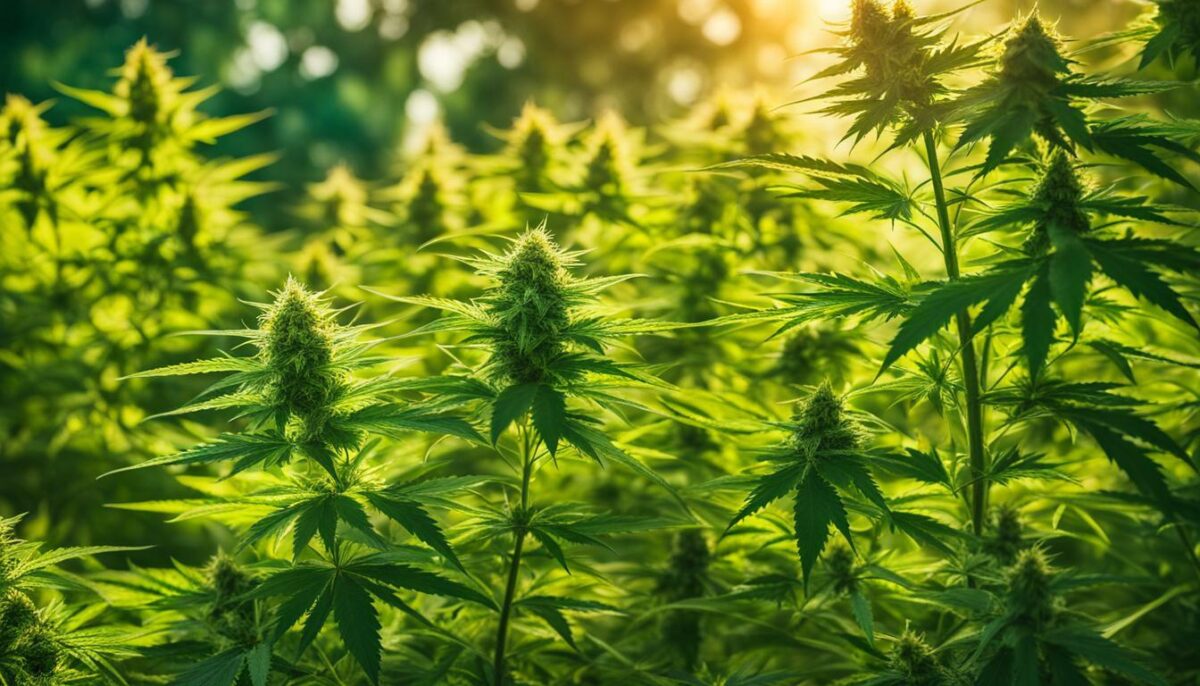
Growing cannabis can be a rewarding experience for any enthusiast, but it requires a bit of finesse. With my comprehensive guide, you’ll learn how to grow cannabis from the ground up, starting with the planning phase all the way to a successful harvest. No matter if you’re a beginner or seasoned grower, this step-by-step guide will help you master the art of growing cannabis.
First things first, let’s talk seeds and soil. Choosing the right seeds and providing the right soil for your cannabis plants to grow in are the first crucial steps to mastering the green thumb. Once you’ve got these down, it’s time to focus on the environment your cannabis plants will be growing in. Proper light, humidity, and temperature are imperative for a successful harvest. I’ll guide you through all the necessary steps to ensure your cannabis plants thrive and produce high-quality buds.
Next, I’ll dive into the nurturing aspect of growing cannabis. Water, nutrients, and pH levels are essential for healthy plant growth. From the seedling stage to flowering, I’ll provide you with expert advice on how to properly nourish and care for your plants at each stage.
To maximize yields, you’ll need to know how to prune, train, and manage the canopy of your plants. I’ll outline the best strategies for shaping your plants to optimize bud production and increase your harvest.
Finally, proper harvesting and curing techniques are crucial for preserving the delightful flavors and potency of your cannabis plants. I’ll provide you with tips and tricks on when and how to properly harvest and cure your buds, allowing you to enjoy the full spectrum of benefits that cannabis has to offer.
- Choosing the right seeds and soil is the foundation for successful cannabis cultivation.
- Providing the right environment with proper light, humidity, and temperature is essential to healthy plant growth.
- Proper nurturing with water, nutrients, and pH levels is key to a successful harvest.
- Maximizing yields with pruning, training, and canopy management will increase your harvest.
- Proper harvesting and curing techniques are crucial for preserving the delightful flavors and potency of your cannabis plants.
Choosing the Right Seeds and Setting Up Your Grow Space
Before you begin growing cannabis, it’s important to choose high-quality seeds and set up a suitable grow space. As a seasoned grower, I can attest that these are the first critical steps to any successful cannabis cultivation. Here are my best practices:
Strains and Number of Plants
There are numerous cannabis strains for growers to choose from, each with its unique set of characteristics. The strain you select should align with your growing goals, as some strains grow better in specific environments and have specific flowering times. You should also consider the number of plants you want to grow and estimate the available growing space you have. Beginners should start with a few plants and increase the number gradually as they gain experience.
Grow Space
Grow space is crucial to the success of your cannabis plants. You should choose an indoor or outdoor space that offers maximum growing potential. Indoor growers should consider using tents, grow boxes, or spare rooms that can be easily controlled to provide favorable growing conditions. Outdoor growers should select spots that receive adequate sunlight, good drainage, and are safe from pests and other potential issues.
Best Practices
When it comes to cannabis cultivation, best practices can make all the difference. Here are some tips:
- Invest in high-quality lighting, such as LED or HID lamps, to provide your plants with adequate light.
- Control the temperature, humidity, and airflow levels in your grow space to prevent mold, pests, and other issues.
- Choose high-quality soil or growing mediums that offer the right mix of nutrients and drainage for your plants.
- Always use pH-balanced water and nutrient solutions to avoid nutrient deficiencies or toxicity.
- Train your plants to grow in a desired shape or direction to improve yield and bud quality.
By following these best practices, you will set yourself up for a successful cannabis growing experience. In the next section, we’ll cover creating the ideal growing environment to optimize your plant’s growth and yield.
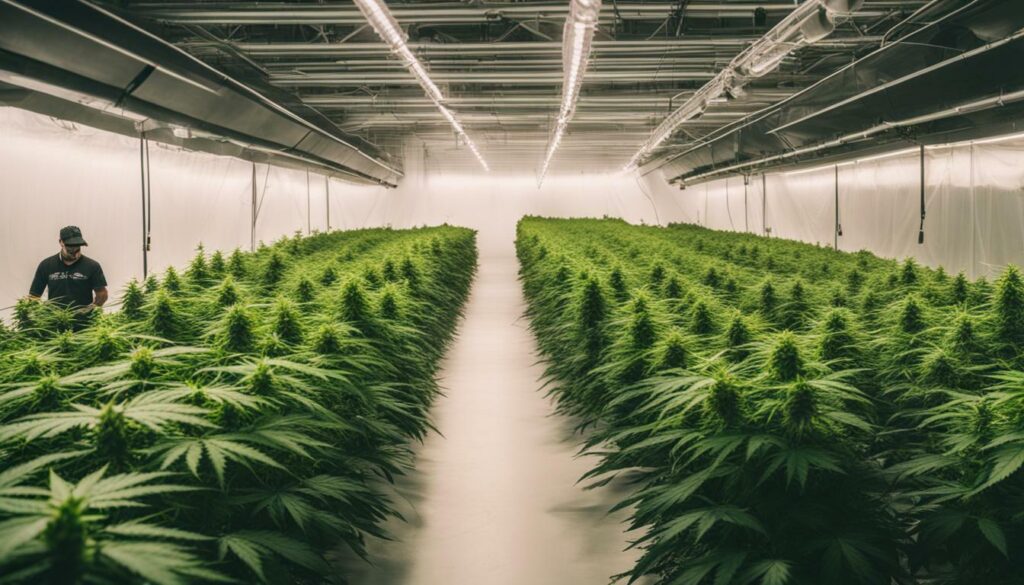
Creating the proper growing environment for your cannabis plants is crucial to their success. Maintaining optimal light, humidity, temperature, and air control is essential to ensuring healthy plant growth and a bountiful harvest.
Light: Cannabis plants require light for photosynthesis, the process that allows them to produce energy from light. Providing your plants with the proper amount of light is critical for their growth. During the vegetative stage, your cannabis plants need between 16-18 hours of light per day. During the flowering stage, you should reduce the light to 12 hours per day to trigger blooming.
Humidity: The right humidity level is crucial for healthy plant growth. In general, you should maintain humidity levels between 40-60% during the vegetative stage and 40-50% during the flowering stage. High humidity levels can lead to mold and mildew growth, while low humidity can cause your plants to dry out and wither.
Temperature: Temperature control is vital for cannabis cultivation. The ideal temperature range for cannabis plants is between 70-85 °F during the day and 58-70 °F at night. Avoid extreme temperature fluctuations, as they can negatively impact plant health and growth.
Air Control: Proper airflow is essential to prevent mold and mildew growth and ensure your plants receive the necessary carbon dioxide for photosynthesis. Investing in fans can help maintain the ideal growing conditions and promote healthy plant growth.
By managing these factors, you can provide your cannabis plants with the ideal growing environment for success.
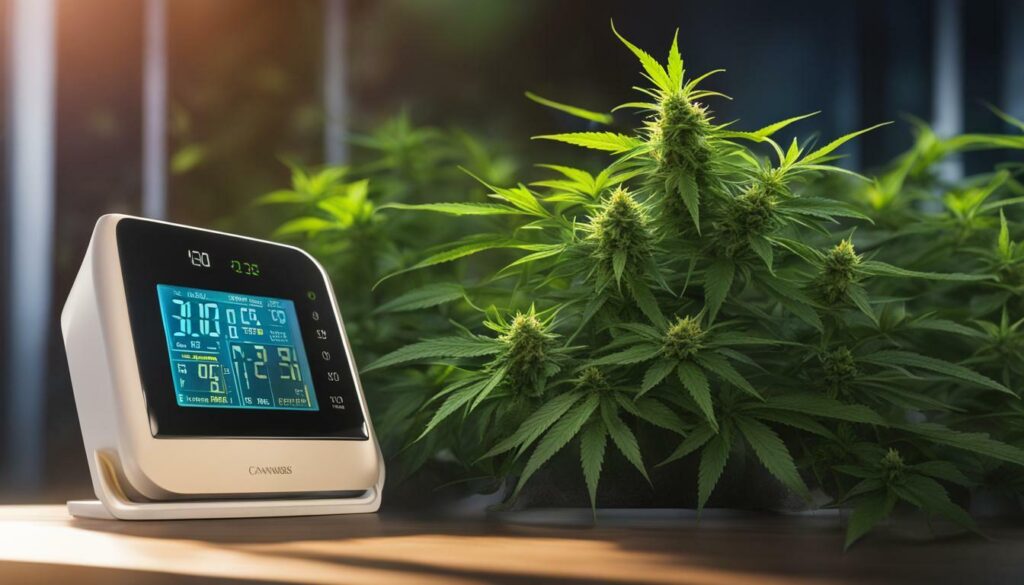
Properly nurturing your cannabis plants is essential for a successful harvest. As a grower, it’s crucial to understand the importance of providing your plants with the right amount of water, nutrients, and maintaining the correct pH levels.
Water is essential to the plant’s growth and development, but it’s important not to overwater your plants. Water your plants when the top inch of soil becomes dry, and make sure to allow for proper drainage.
When it comes to providing nutrients, it’s important to understand the different stages of plant growth. During the seedling stage, your plants need more nitrogen. As they move into the vegetative stage, they require more phosphorus and potassium. You can provide your plants with these nutrients through organic fertilizers or supplements.
The pH level of the soil is also essential for plant growth. The ideal pH range for cannabis plants is between 6.0 and 7.0. If the pH level is too high or too low, your plants won’t be able to absorb the necessary nutrients. You can use a pH testing kit to monitor and adjust the pH level of your soil as needed.
Overall, giving your plants the right amount of water, nutrients, and maintaining the correct pH levels will ensure healthy plant growth and optimal yields.
| Nutrient | Role in Plant Growth | When to Provide |
|---|---|---|
| Nitrogen | Supports leaf growth and development | Seedling stage |
| Phosphorus | Stimulates root development and supports flower growth | Vegetative stage |
| Potassium | Strengthens plant structure and supports flower growth | Vegetative stage |
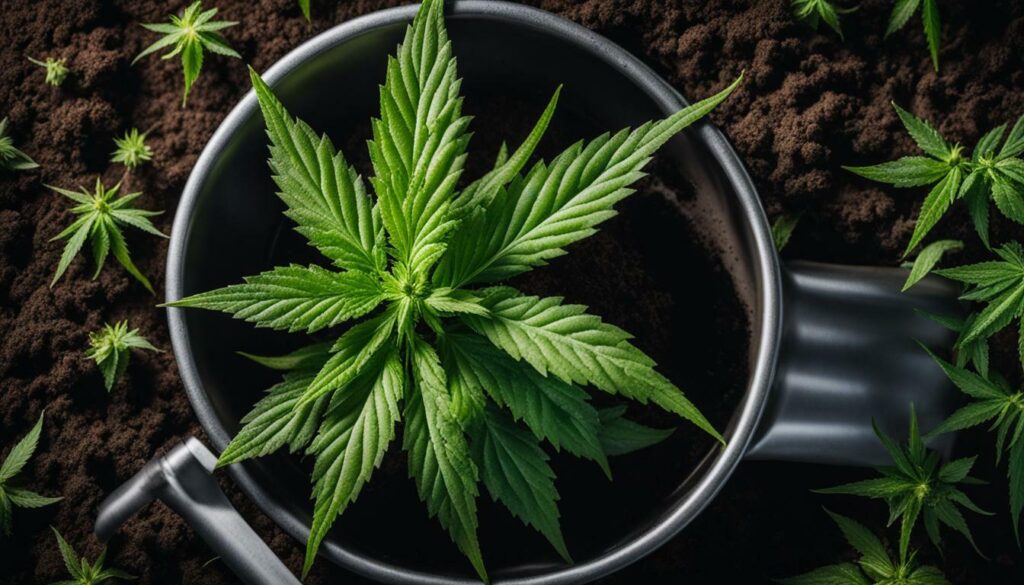
Remember, overfeeding your plants with nutrients can be just as harmful as not providing enough. Always follow the recommended dosages and keep an eye on your plants for any signs of nutrient burn.
From Seedlings to Flowering: The Growth Stages of Cannabis
Understanding the growth stages of cannabis plants is crucial for a successful harvest. From seedlings to flowering, each stage requires specific care and attention to ensure your plants grow healthy and strong.
Seedling Stage
The seedling stage is the first stage of the cannabis plant’s life cycle. During this stage, the plant develops its initial leaves and stem. Seedlings require a warm and humid environment, with temperatures between 68-77°F (20-25°C) and a humidity of around 70%. To prevent overwatering, it’s important to gradually increase the amount of water as the plant grows.
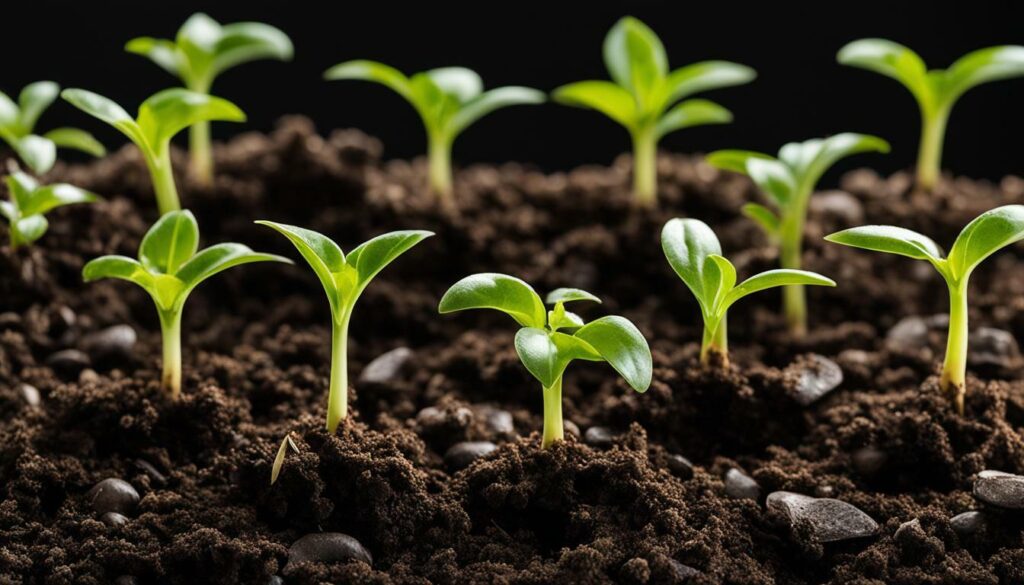
Vegetative Stage
The vegetative stage is the phase where the plant grows its leaves and stems. During this stage, cannabis plants require plenty of light, nutrients, and water. The ideal light cycle for vegetative growth is 18 hours of light and 6 hours of darkness. Nitrogen is critical during the vegetative stage, so it’s important to choose a fertilizer with high levels of nitrogen to support healthy growth.
Flowering Stage
The flowering stage is when the cannabis plant begins to produce buds. In this phase, the plant requires less nitrogen and more phosphorus and potassium to produce healthy buds. The light cycle for flowering is 12 hours of light and 12 hours of darkness. Lowering the temperature in the grow space by a few degrees during the dark period can increase the plant’s resin production.
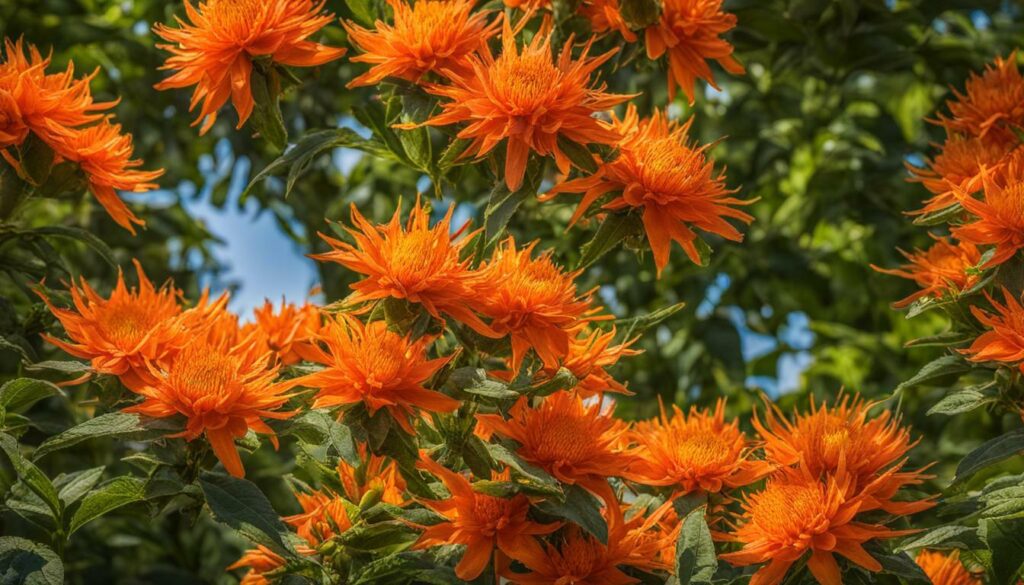
By understanding the different growth stages of cannabis, you can provide your plants with the care they need to grow healthy and strong. The next section will cover pruning, training, and canopy management techniques to maximize your yields.
Maximizing Yields: Pruning, Training, and Canopy Management
One of the keys to maximizing your cannabis yields is proper pruning, training, and canopy management. By shaping your plants for optimal bud production, you can increase your yields significantly. In this section, I will explain the techniques and strategies for achieving this.
Pruning is the process of selectively removing certain branches or leaves from your cannabis plants to promote healthy growth and improve yields. By removing unnecessary or unhealthy branches, you can direct the plant’s energy towards producing larger and healthier buds. When pruning, it’s essential to use sharp and sterile tools to prevent the spread of disease.
Training is another crucial technique that involves manipulating the growth direction of your plants to improve yields. Techniques such as low-stress training (LST) and screen of green (SCROG) can help you create an even canopy and increase the number of buds on your plants. LST involves gently bending the branches of the plant and tying them down to create a more horizontal growth pattern. SCROG involves using a screen or net to guide the plants towards an even canopy and promote lateral growth.
Canopy management refers to the process of maintaining an even canopy of buds throughout your plant’s growth cycle. By keeping the canopy even, you can ensure that all buds receive the same amount of light and nutrients, resulting in more consistent yields. This process involves removing any large or dense branches that could block light from reaching lower parts of the plant.
When done correctly, pruning, training, and canopy management can significantly increase your cannabis yields. However, it’s essential to remember that every strain is different, and what works for one plant may not work for another. It’s crucial to experiment with various techniques and find what works best for your plants.
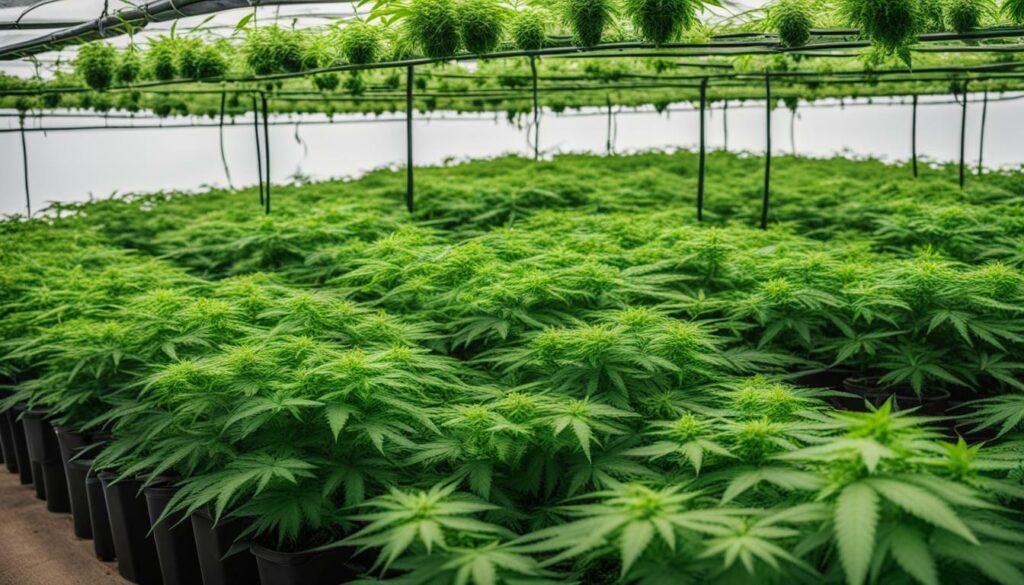
By incorporating these techniques into your cannabis cultivation process, you can produce higher yields and better quality buds. Remember to monitor your plants closely and adjust your techniques as necessary to achieve the best results.
Harvesting and Curing: preserving the delightful flavors and potency
Harvesting and curing are the final steps in the cannabis cultivation process, and they are crucial for preserving the flavor, aroma, and potency of your buds. When you’ve reached the right time to harvest, you’ll need to trim off the excess leaves and branches, leaving only the buds.
When harvesting, we need to look for the trichomes on the buds. These small, resinous glands contain the active compounds that produce the desired effects of cannabis. For best results, harvest when trichomes are milky white or amber in color, indicating peak potency and flavor.
Once you have harvested your buds, the next step is to dry them. This involves hanging them upside down in a well-ventilated area with low humidity. Be sure to keep the temperature between 60-70°F (15-21°C) and humidity between 45-55% to prevent mold or mildew formation.
After your buds are dry, it’s time to cure them. Curing is a process of breaking down chlorophyll and other plant compounds while preserving the essential oils, terpenes, and flavonoids found in the buds. This process also improves the overall smoothness of smoke and enhances the flavor and aroma of the buds.
Curing takes place in glass jars, where you will store your buds. Using hygrometers, you need to ensure that the humidity inside is between 58% to 62% to avoid molding or overdrying. During curing, be sure to “burp” the jars daily for the first week, opening them for a few minutes at a time to let in fresh air and release any excess moisture. After about a month, your buds will be fully cured and ready for consumption.
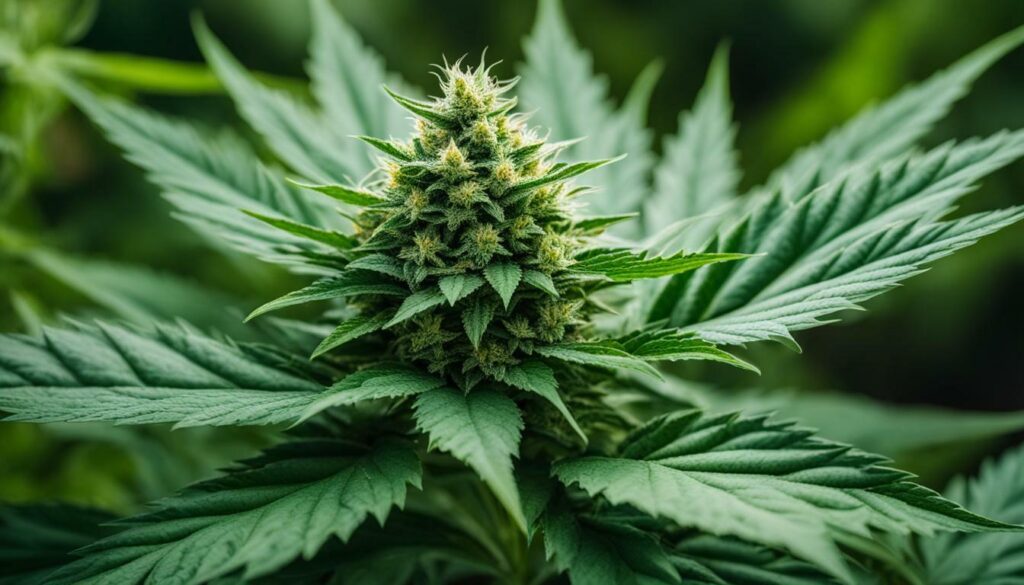
A proper harvest, drying, and curing method can determine whether your cannabis will be top-quality or just mediocre. Attention to detail is key to producing the best possible cannabis that you can enjoy for months to come.
Troubleshooting Common Problems and Pests
As a cannabis grower, it’s common to face problems and pests during cultivation. The good news is that most issues have solutions, and with the right tips, you can overcome them quickly. Here are some common problems and pests you may encounter in cannabis cultivation:
Pests
Pests can be a nightmare for any cannabis grower. They can cause significant damage to your plants and compromise your harvest. The most common pests include spider mites, thrips, and aphids. The best way to prevent pests is to maintain a clean and healthy grow space. Regularly inspect your plants for signs of pests and remove any infected leaves or plants immediately. If you notice an infestation, you can use a natural insecticide or pesticide to get rid of the problem.
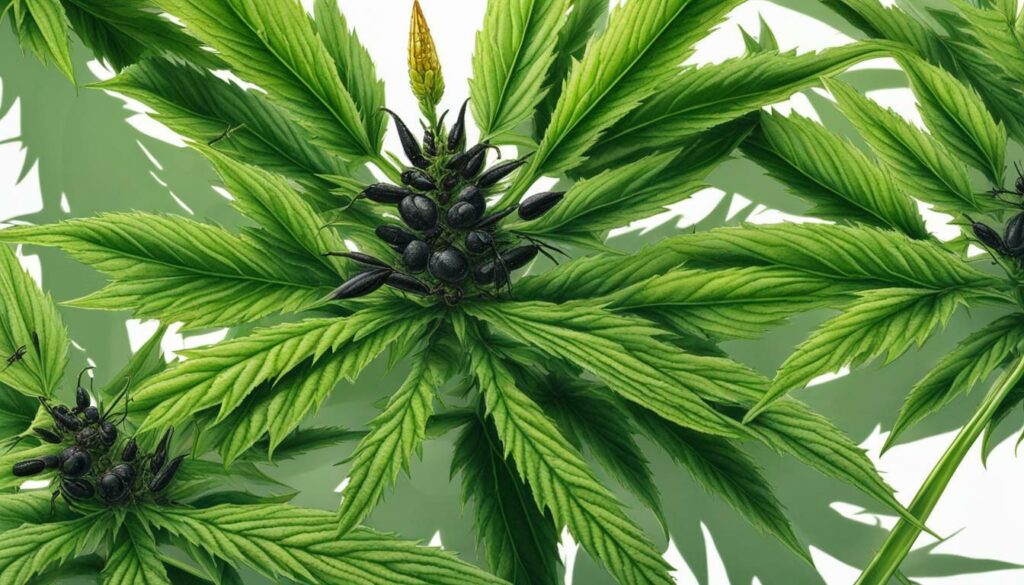
Mold can be a serious issue in cannabis cultivation, particularly in high humidity environments. It can cause your buds to rot and compromise the quality of your harvest. To prevent mold, ensure you have proper airflow in your grow space. Invest in a fan or two to improve airflow, and monitor humidity levels regularly. If you notice mold, remove infected buds or plants immediately. Proper drying and curing after harvest can also prevent mold.
Tips for Beginners
As a beginner cannabis grower, it’s easy to feel overwhelmed when problems arise. However, with the right tips, you can overcome any challenge and grow healthy cannabis plants. Here are some tips for beginners:
- Start small: Begin with a small grow space and a low number of plants. This will help you manage any problems that arise easily.
- Choose easy-to-grow strains: Choose strains that are suitable for beginners. Some strains are hardier than others and require less maintenance.
- Maintain proper pH levels: Proper pH levels are crucial for healthy plant growth. Use a pH meter to monitor levels regularly.
- Use high-quality soil: High-quality soil can make a significant difference in plant health. Invest in a nutrient-rich soil mix to give your plants the best possible start.
- Be patient: Cannabis cultivation takes time and patience. Don’t rush the process, and avoid making drastic changes to your grow space or plant care without careful consideration.
By following these tips and addressing problems and pests quickly, you’ll be well on your way to becoming a successful cannabis grower.
Conclusion:
Thank you for taking the time to read this guide on cannabis cultivation. I hope that the information and tips provided have been helpful in your journey to becoming a successful grower. Remember, cannabis cultivation is an ongoing learning process, and with each grow, you will gain new insights and improve your skills.
By following the advice on choosing the right seeds, setting up an optimal grow space, creating the ideal growing environment and providing your plants with the right amount of water, nutrients, and pH levels, you are on your way to growing healthy cannabis plants.
Understanding the different growth stages of cannabis, including seedling, vegetative, and flowering, and mastering techniques like pruning, training, and canopy management will help you maximize your yields.
Harvesting and curing your cannabis properly is crucial in producing top-quality buds. Remember to also troubleshoot common problems and pests to keep your plants healthy and thriving.
I hope this guide has provided you with the necessary information and tips to grow your own cannabis successfully. Remember, always conduct your research and stay informed on the latest cannabis cultivation practices and regulations. Happy growing!
FAQ
Q: How do I choose the right seeds for growing cannabis?
A: When choosing seeds for growing cannabis, consider factors such as strain preference, growing environment, and desired effects. Research different strains and select ones that are suitable for your experience level and desired outcomes.
Q: How do I set up my grow space for cannabis cultivation?
A: Setting up your grow space involves creating an environment that is conducive to cannabis growth. Factors to consider include lighting, airflow, temperature, and space requirements. Proper equipment, such as grow lights and ventilation systems, will aid in providing optimal conditions for your plants.
Q: How do I create the ideal growing environment for cannabis?
A: To create the ideal growing environment for cannabis, you’ll need to control variables such as light, humidity, and temperature. Monitor and adjust these factors to match the needs of your plants at different growth stages. Utilize fans and ventilation to ensure proper airflow within your grow space.
Q: What are the essential nutrients for cannabis plants and how do I provide them?
A: Cannabis plants require a balanced supply of nutrients, including nitrogen, phosphorus, and potassium. Ensure your plants receive the necessary nutrients by using a fertilizer specifically formulated for cannabis cultivation. Monitoring the pH levels of your growing medium is also crucial for nutrient absorption.
Q: What are the different growth stages of cannabis and how should I care for my plants during each stage?
A: Cannabis plants go through three main growth stages: seedling, vegetative, and flowering. During the seedling stage, they require gentle care and proper lighting. In the vegetative stage, focus on promoting leafy growth through proper nutrition and lighting. The flowering stage requires adjusting light cycles and providing the right nutrients to support bud development.
Q: How can I maximize the yields of my cannabis plants?
A: To maximize your cannabis yields, consider techniques such as pruning, training, and canopy management. Pruning involves removing unnecessary branches, while training involves manipulating the plant’s growth pattern. Canopy management ensures that all buds receive equal access to light, resulting in more consistent yields.
Q: What is the proper way to harvest and cure cannabis?
A: Harvest your cannabis plants when the trichomes are at their desired maturity. Dry your harvested buds slowly, ensuring proper humidity levels and airflow. Once dried, cure the buds in airtight jars to enhance their flavors, potency, and overall quality.
Q: How can I troubleshoot common problems and pests in cannabis cultivation?
A: Common problems in cannabis cultivation include pests, mold, and nutrient deficiencies. Implement preventive measures such as proper sanitation and regular monitoring. If issues arise, identify the problem and take appropriate action, such as using organic pest control methods or adjusting nutrient levels.
Q: What is the conclusion of this guide on cannabis cultivation?
A: Congratulations on mastering the art of growing cannabis! This guide has equipped you with the necessary knowledge and tips to successfully cultivate your own cannabis plants. Remember, cannabis cultivation is a continuous learning process, and each grow will present new challenges and opportunities. Enjoy the rewarding journey of growing your own cannabis and exploring the limitless possibilities it offers.